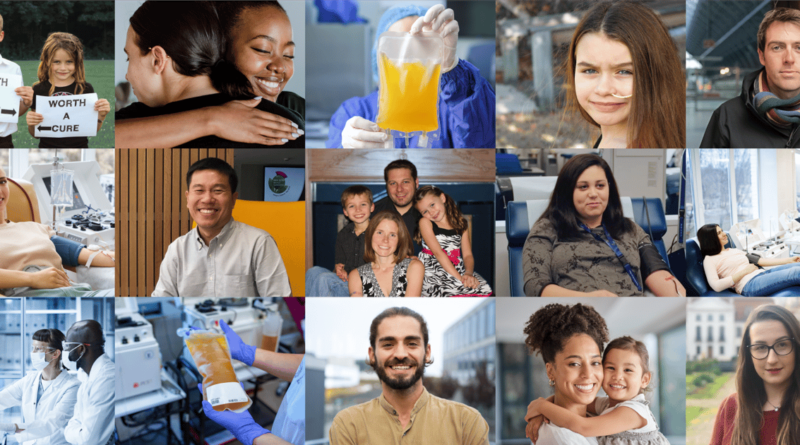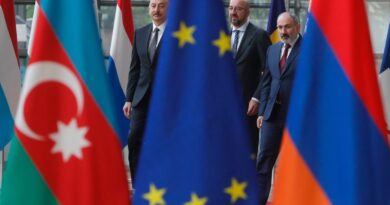Benefits of the Substances of Human Origin (SoHO) Regulation
At the end of June, the European Parliament’s Committee on the Environment, Public Health and Food Safety (ENVI) is set to vote on amendments to the European Commission’s draft proposal for a regulation on standards of quality and safety for substances of human origin intended for human application (SoHO Regulation). This includes plasma. It is vital that the new Regulation is informed by science and fact, and that agreed solutions for sustainable supply across Europe are grounded in reality, placing donor and patient well-being first.
Plasma is the single largest component of human blood that contains proteins that are vital to the human body.
Plasma is the single largest component of human blood that contains proteins that are vital to the human body. Medicines made from plasma — plasma-derived medicinal products (PDMPs) — are essential therapies that treat a variety of rare and complex chronic diseases, replacing missing or deficient proteins, and enabling people with lifelong conditions to lead healthier and more productive lives. Some patients have no alternatives. It is only through the selfless donation of plasma by healthy volunteers that these medicines can be manufactured.
As confirmed by the recently published independent Marketing Research Bureau (MRB), Europe currently relies on the U.S. for almost 40 percent of the plasma it requires to manufacture PDMPs to treat its citizens. Demand in Europe for essential PDMPS, like immunoglobulins, grew by 6.7 percent annually during the period 2010-2021[i]. Therefore, it is vital that the new legal framework helps EU member countries to increase plasma collection in Europe to support increased patient access to PDMPs.
Europe currently relies on the U.S. for almost 40 percent of the plasma it requires to manufacture plasma-derived medicinal products to treat its citizens.
The collectors of plasma rigorously and continuously monitor and assess plasma donation procedures and practices, as well as report all donor adverse events (DAEs). In fact, source plasma donation via plasmapheresis — during which plasma is separated from the other blood components which are then returned to the donor — has very few DAEs. An assessment of over 12 million plasma donations showed just how rare DAEs are, with 15.85 events per 10,000 donations[ii], a number comparable with blood donation.
Plasma manufacturers also continue to invest in new studies. The safety of plasma donors has been demonstrated by a range of studies[iii]. Donor health and relevant donor health parameters are monitored regularly, as per national regulations to ensure that donor safety is maintained.
Moreover, EU regulations set the requirements for the collection and testing of human plasma for further manufacturing, independently of its origin. The requirements for the quality, safety and efficacy of the starting material (plasma) and the final product (PDMPs) are the same, regardless of where the plasma is sourced (U.S. or EU) or how it is obtained (compensated vs. non-compensated)[iv].
For some, though, it is the act of compensation in the form of a fixed-rate allowance, with conditions set by member countries, that has prompted the call for amendments to the SoHO text that would likely deter donors and prevent reliable patient access. Compensating donors acknowledges the inconveniences that donors face and the special effort they must make when they donate plasma. This is because while a blood donation may take 15-20 minutes, a plasma donation done through plasmapheresis takes about four times as long.
The European Commission stated clearly in the proposed draft Regulation that compensating plasma donors in the form of a fixed-rate allowance is consistent with the principle of voluntary unpaid donation (VUD)[v]. How much compensation — and in which form — is to be determined and regulated by member country authorities.
Policies that encourage compensation for source plasma donors have proven to increase plasma donation rates.
Most European countries provide some form of compensation. Policies that encourage compensation for source plasma donors have proven to increase plasma donation rates. This compensation varies in form, from paid days off work, to tax reductions, vouchers and fixed-rate allowances. In Austria, Germany, Czechia and Hungary, where compensation takes place in the form of a fixed-rate allowance and private industry is permitted to collect, they not only meet the plasma needs of their citizens, but also contribute more than 46 percent of the total amount of plasma needed to produce PDMPs for patients in Europe.
Significantly, the EMA acknowledges the contribution of compensated donation to rare disease treatment in the EU: “It is important to recognize that a very substantial proportion of the total plasma used in the manufacture of PDMPs used in Europe originates from paid or remunerated donations. A requirement for unpaid or nonremunerated donors would create major supply problems and product shortages without any justification on grounds of safety.”[vi] Not allowing EU countries the option to permit compensation, whether is by the public-, private- or third-sector, would lead to a fall in plasma donation volumes and a reduction in access to lifesaving PDMPs. While many EU countries have tried to increase national sufficiency in plasma, the new report by the MRB outlines that there is a long way to go. France and Italy have long-term objectives to be self-sufficient but had immunoglobulin self-sufficiency ratios of only 27.5 percent and 32 percent respectively in 2020. While these countries — and many others in the EU — rely on imports of immunoglobulins, Austria, Czechia, Germany and Hungary collect more plasma than the demand for immunoglobulins, and support supply in other countries.
The bottom line is that plasma donation is safe. And Europe will only succeed in achieving strategic autonomy in plasma if it acknowledges that compensation via a fixed monetary allowance provides an important option to EU member countries. Whether the public-, private- or third-sector (such as NGOs) collect plasma, compensation is a proven tool to reduce reliance on other countries, strengthen European health care systems, and make accessible and elevate the donation experience so that more people choose to donate plasma and save more lives.
[i] Facts And Figures On The Self-Sufficiency For Immunoglobulin Production From Eu-Sourced Plasma; available here: (last access May 2023)
[ii] Cho J, Hiskey M. Plasmavigilance: Source plasma joins the call to arms, Transfusion. 2021;61:2803–2805.
[iii] Purohit M, Berger M, Malhotra R, Simon T. Review and assessment of the donor safety among plasma donors. Transfusion. 2023.
[iv] Guideline on epidemiological data on blood transmissible infections (EMA/CHMP/BWP/548524/2008): ; Guideline on the scientific data requirements for a plasma master file (PMF)/ EMEA/CHMP/BWP/3794/03: https://www.ema.europa.eu/en/documents/scientific-guideline/guideline-scientific-data-requirements-plasma-master-file-pmf-revision-1_en.pdf; Guideline on plasma-derived medicinal products/ EMA/CHMP/BWP/706271/2010/ 21 July 2018:
[v] Commission Staff Working Document on the implementation of the principle of voluntary and unpaid donation for human blood and blood components as foreseen in Directive 2002/98/EC:
[vi] CMP Position Statement: Non-Remunerated And Remunerated Donors: Safety And Supply Of Plasma-Derived Medicinal Products (EMEA/CPMP/BWP/1818/02/Final)




